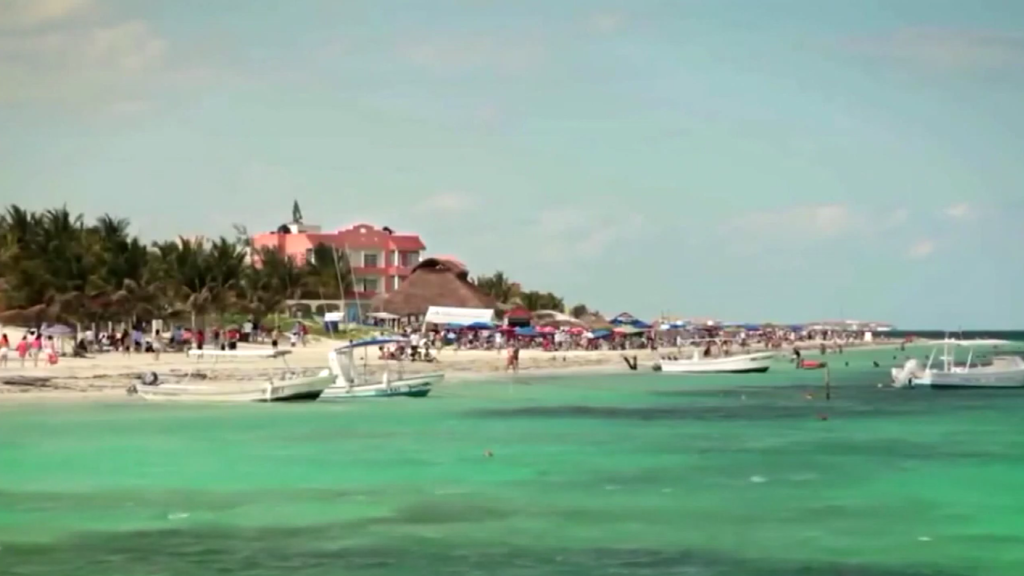Understanding the U.S. Travel Advisory for Mexico
The U.S. State Department has issued a new travel advisory for individuals planning to visit Mexico, highlighting potential risks that travelers should be aware of. The advisory places Mexico at Level 2, which suggests that travelers should exercise caution due to concerns about terrorism, crime, and kidnapping. While this does not mean that visiting Mexico is entirely discouraged, it emphasizes the importance of thorough preparation before any trip.
A Tragic Experience in Mexico
One family who has experienced the dangers firsthand is the Peña family from Oak Forest. Their 14-year-old son, Jason, suffered a life-altering injury when he was shot in the head during a family visit to Durango, Mexico, in December. The incident occurred along a highway while the family was celebrating a special occasion. Jason’s mother shared that only 30% of his brain functions properly, despite months of rehabilitation. Tragically, Jason’s father, his uncle, and a third man were also killed in the shooting.
Challenges Faced by Travelers in Mexico
Pastor Julie Contreras, an immigration advocate who works with Jason’s family, has seen numerous cases involving individuals fleeing danger in Mexico. She noted that travelers often face limited access to government assistance and emergency services. In Jason’s case, the family had to hire attorneys in Mexico and pay significant fees to seek justice. This highlights the challenges that can arise when dealing with legal and safety issues in a foreign country.
Regional Variations in Travel Advisories
Although the U.S. State Department has issued a Level 2 advisory for the entire country of Mexico, specific states may have different risk levels. Some regions are considered more dangerous than others:
- Level 4 Advisories (Avoid Travel):Colima, Guerrero, Michoacan, Sinaloa, Tamaulipas, and Zacatecas.
- Level 3 Advisories (Reconsider Travel):Baja California, Chiapas, Chihuahua, Coahuila, Guanajuato, Jalisco, Morelos, and Sonora.
- Level 2 Advisories (Exercise Increased Caution):Mexico City, the State of Mexico, and several other states including Aguascalientes, Baja California Sur, Durango, Hidalgo, Nayarit, Nuevo León, Oaxaca, Puebla, Querétaro, Quintana Roo, San Luis Potosí, Tabasco, Tlaxcala, and Veracruz.
- Level 1 Advisories (Normal Precautions):Campeche and Yucatán.
Quintana Roo, which includes popular tourist destinations like Cancún and Cozumel, is under a Level 2 advisory. This means travelers should remain vigilant but can still enjoy their vacation if they take necessary precautions.
Expert Opinions on Travel Advisories
CBS News Travel Editor Peter Greenberg emphasized that almost every country has a travel advisory. He stated that a Level 2 advisory does not necessarily pose a significant threat but encourages travelers to be more aware of their surroundings. Greenberg added that situational awareness is essential for any traveler, regardless of destination.
Safety Tips for Travelers
The U.S. State Department advises travelers to cooperate with officials if stopped at road checkpoints. It also recommends avoiding travel during nighttime or in remote areas. These measures are designed to help ensure the safety of visitors and reduce the likelihood of encountering dangerous situations.
Conclusion
While the U.S. travel advisory for Mexico indicates potential risks, it does not mean that travel should be avoided altogether. Instead, it serves as a reminder for travelers to research their destinations, stay informed, and take necessary precautions. For families like Jason’s, the experience underscores the importance of being prepared and aware of the challenges that can arise when traveling abroad.



